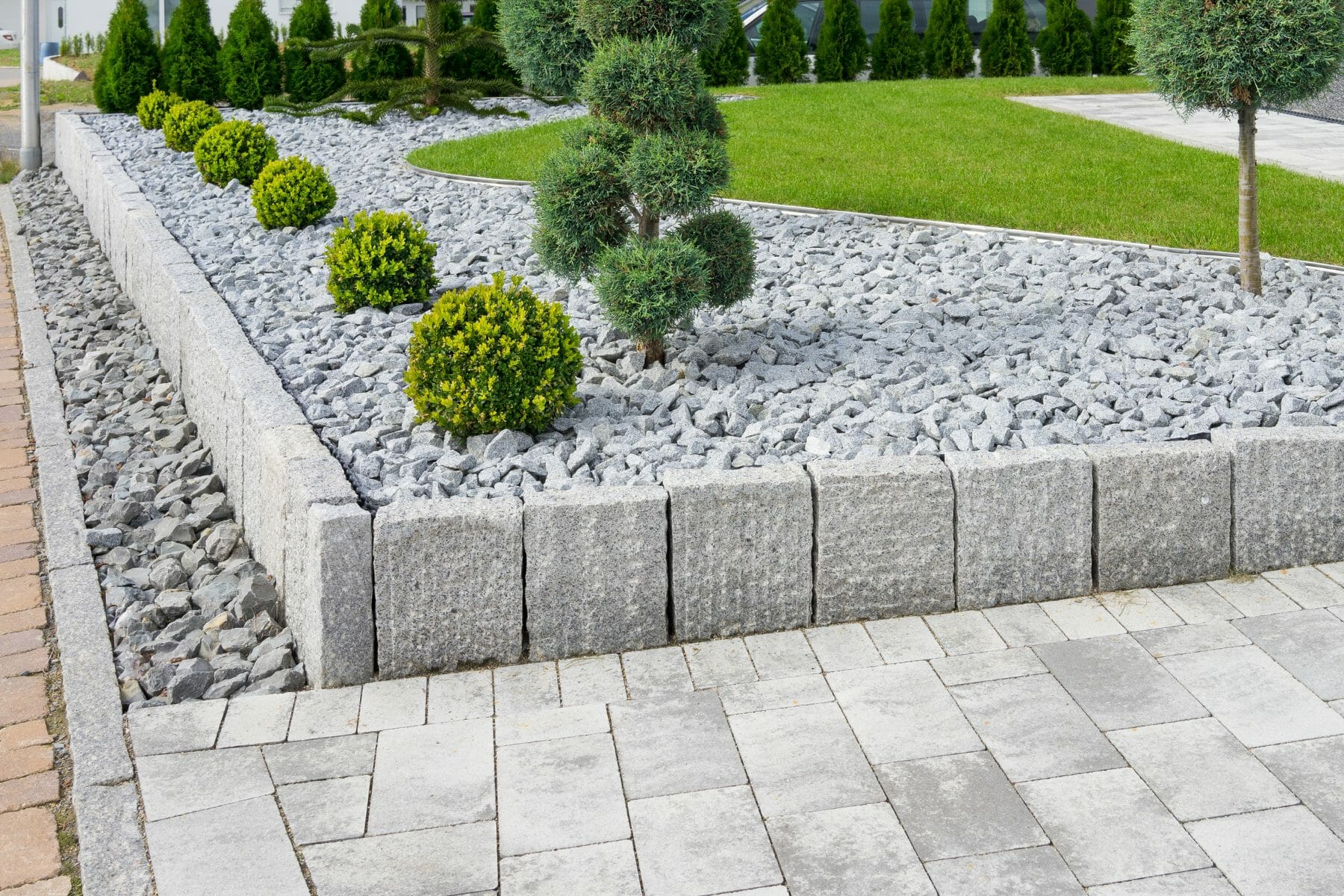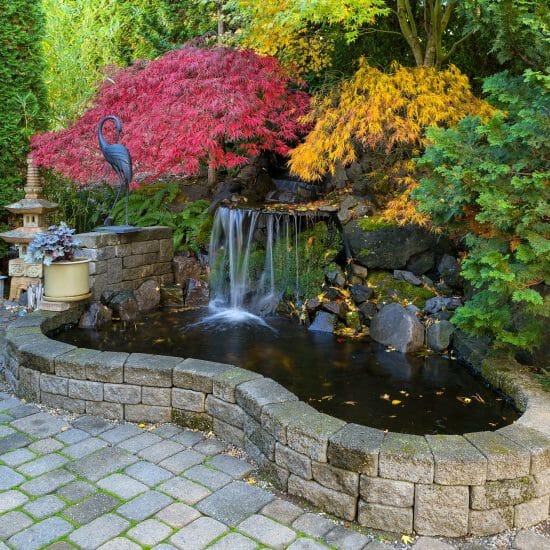Landscape rocks are a beautiful, low-maintenance addition to a landscape. A well-placed boulder, or dry riverbed, can add depth as well as give the landscape a natural appeal.
 Eight types of landscape rocks are commonly used, and they’re used in many creative ways. And,
Eight types of landscape rocks are commonly used, and they’re used in many creative ways. And,
like all landscape components, there are pros and cons to consider.
Pros & Cons of Landscape Rocks
Are rocks a good addition to your landscape?
That depends. Rocks can be used as a statement piece, to build walls and patios, as a mulch or border, to build water features ‒ and the list goes on.
While some of these features may be a perfect addition to your landscape, others may be unnecessary or even cause future problems.
The four major benefits to adding rocks to your landscape include:
- Rocks are low-maintenance, and they don’t break down like mulch or wooden landscape features.
- Rocks are cheap (although delivery may be expensive). Rocks do not have to be replaced.
- Rocks are fire-proof. In hot, dry climates susceptible to wildfires, rocks help reduce the fire risk around your home.
- Rocks provide natural beauty. Rock gardens, cottage gardens and native gardens have a more natural feel with the addition of small boulders or a rock border.
However, adding rocks to the landscape comes with some compromises. Rocks are heavy, and once they have settled into the soil, they can be difficult to maneuver.
The four major drawbacks to adding rocks to your landscape include:
- Rocks are heavy. Whether used as mulch, a border or accent boulders, it’s more difficult to move rocks to perform maintenance on landscape plants or irrigation lines.
- Rocks can get hot, especially when used as mulch. The soil under rocks can get very warm in hot climates, which can harm the roots of landscape plants.
- Rocks can raise pH. Over time, rocks can break down and change the pH of the soil. This may be especially noticeable around conifers and other acid-loving plants.
- Rocks can ruin soil structure. This is not a concern with patios or borders, but river rock and gravel can compress the soil beneath them, which can constrict roots. Also, rocks do not break down like compost or wood chips, so you will have to add more synthetic fertilizer to the landscape.
Weeds are a point of contention for landscape rocks. While weed fabric and a heavy rock layer will suppress most weeds, soil and debris can eventually collect in the cracks and crevices of rock features. Weed seeds can germinate, and they are much more difficult to remove from rocky, compacted areas.
8 Types of Landscape Rocks
If you decide rocks would make a good addition to your landscape, you will be faced with an array of colors, shapes, sizes, and costs, and it can be difficult to decide which ones to use.
Dare we say that without a basic knowledge of the different options and uses, you may be stuck between a rock and a hard place.
Gravel
The three most commonly used types of gravel include:
- Decomposed granite
- Crushed stone
- Pea gravel
Decomposed granite, a very fine material, is used for walkways, as a filler between pavers, and as a foundation layer for other landscape fixtures. Compact each layer as you build up a pathway or foundation.
Crushed stone has a similar appearance and use as decomposed granite, but the rocks are larger and come in more colors, although the most common by far is gray. Crushed stone can be quite sharp, which makes it more common as a mulch than as a pathway material.
Pea gravel ranges in size from ⅛” to ⅜”, and the stones look like miniature, smooth river rocks. Pea gravel is much easier to walk on, but it doesn’t pack as well as crushed stone.
Lava Rock
Lava rock is a unique landscape rock, because it is light, porous, and able to absorb heat throughout the day and release it at night. Most lava rock is a rusty red color, but it is also available in black, although that color is less common.
Lava rock is used mostly as a mulch material, and it allows more water to penetrate into the soil than river rock or gravel. The light weight also means the soil is not as compacted as it would be with other rock mulches.
River Rock
River rock is one of the most common landscape rocks because it is cheap, versatile and beautiful. River rock is a collection of smooth stones in hues of white, gray and brown.
River rock can be used as a mulch, as a landscape border, or to line dry riverbeds and water features. Order a range of sizes for the most natural look.
Flagstone
Flagstones are flat stones used to build walls, patios and other landscape features.
Limestone is a common type of flagstone with a soft yellow/brown color. Limestone can be sanded smooth or easily shaped to fit into any pattern.
Sandstone is another common type of flagstone with more color options but the same easy-to-shape texture.
Some of the many different types of flagstone found throughout the United States are:
- Bluestone is common near Pennsylvania and New York, as is slate
- Travertine is common in Texas and Oklahoma
- Quartzite is commonly used in Oklahoma, Idaho and Utah
- Arizona flagstone is common in Arizona
- Limestone is used in Texas and Indiana
- Oklahoma flagstone and Silvermist are common in Oklahoma
- Colorado flagstone is common in Colorado
- Travertine is used in some Western states such as Texas and Oklahoma
Not all flagstones are suitable for every climate. Ask your local landscape design professionals for information as to which flagstones are best for your area.
Boulders
Boulders are common statement pieces in a landscape, but they can be pricey and difficult to transport.
A well-placed boulder can add a natural accent to your landscape, but a poorly placed boulder can make lawn maintenance difficult and create safety hazards.
Before you buy a giant rock, ask a landscape professional how to place boulders correctly in your landscape.
Landscape rocks are a cost-effective, low-maintenance addition to the landscape that adds a natural element and can create durable outdoor living spaces.
For more information on adding landscape rock to your landscape, contact us today!

